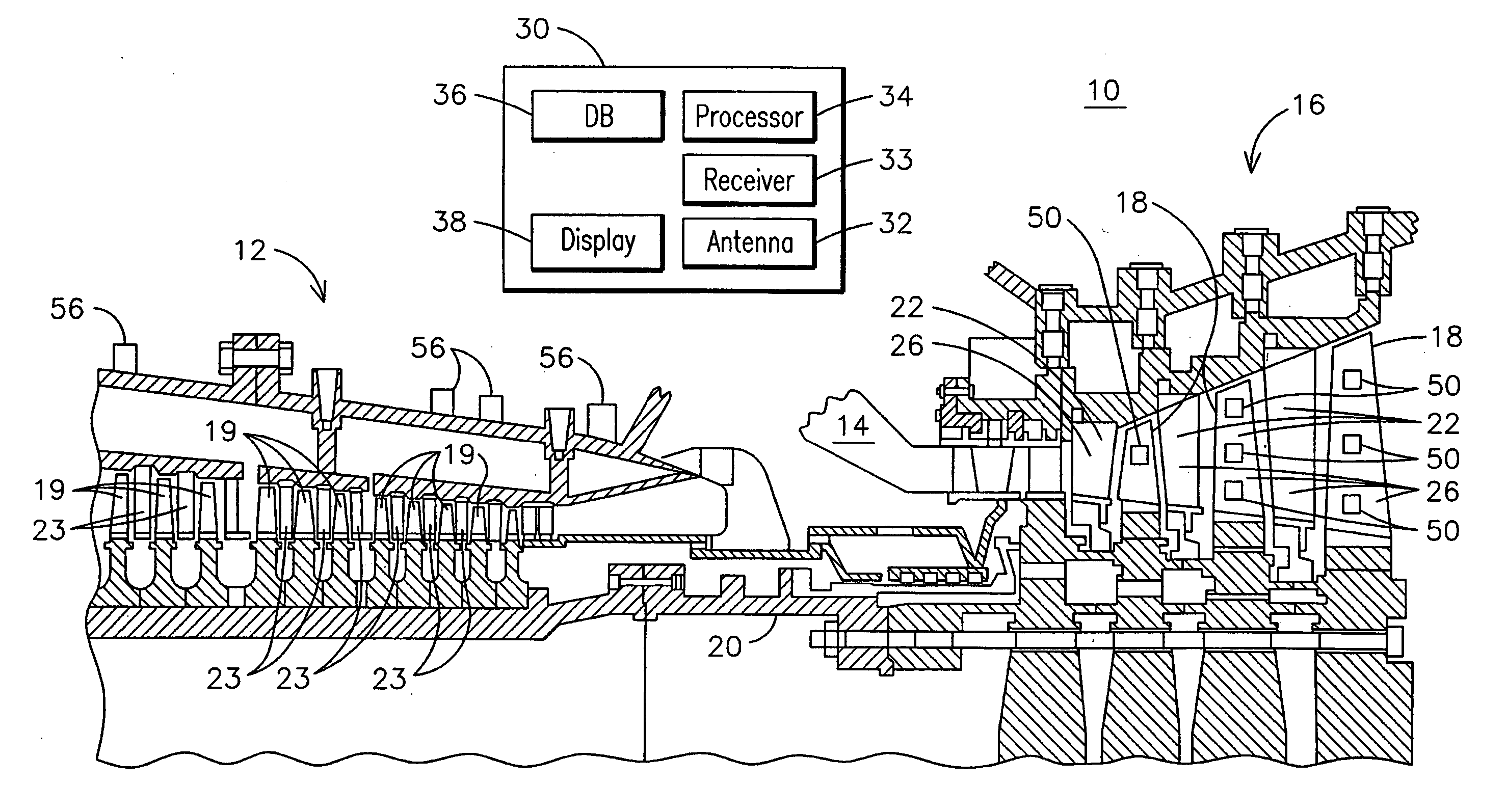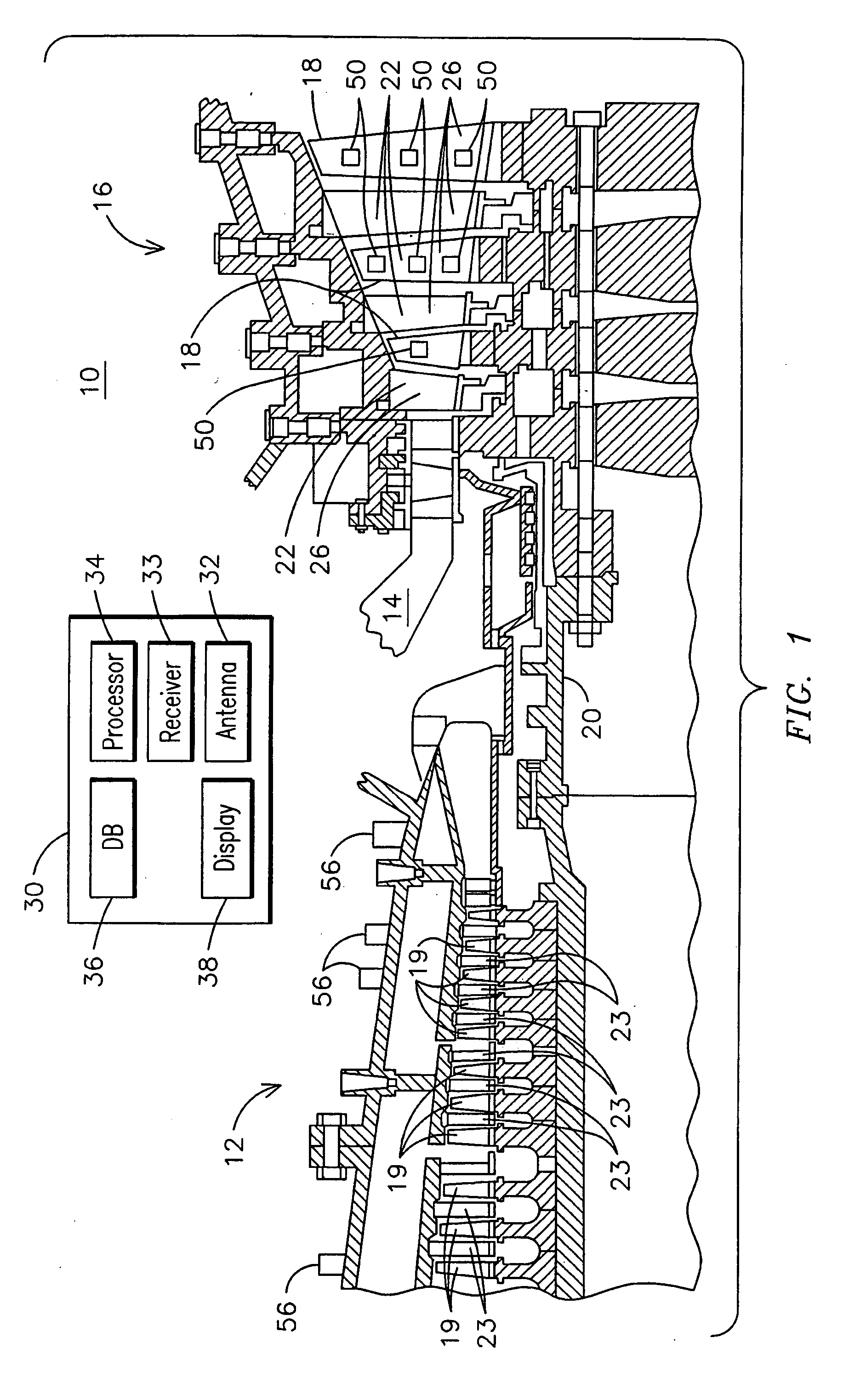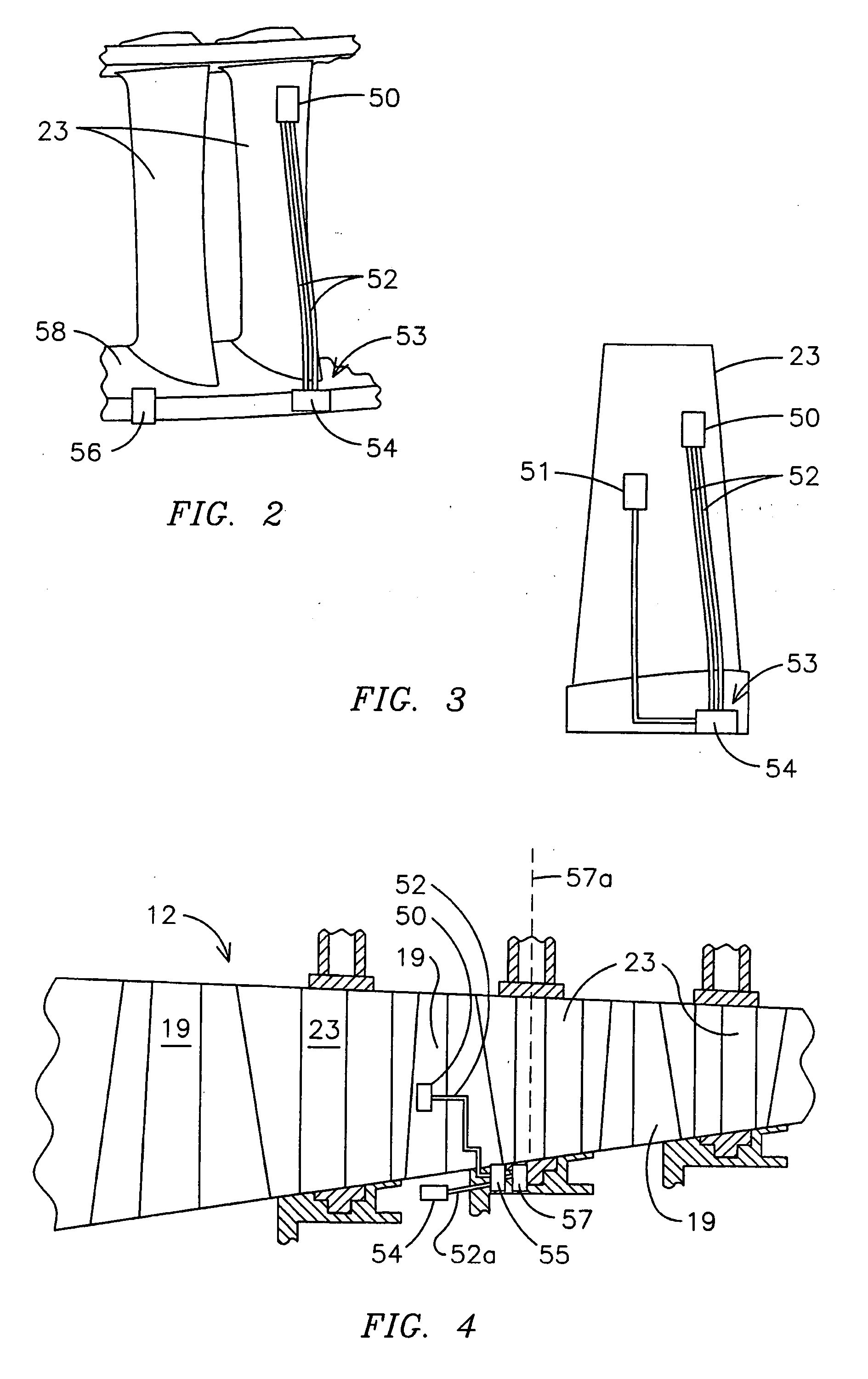Apparatus and method of monitoring operating parameters of a gas turbine
a gas turbine and operating environment technology, applied in the field of operating environment monitoring parameters of gas turbines, can solve the problems of difficult to obtain real-world operating environment data, designers and operators have very little information regarding the internal status of turbine engine components during operation, and superalloy materials cannot withstand extended exposure to the hot combustion gas of the current generation gas turbine engine withou
- Summary
- Abstract
- Description
- Claims
- Application Information
AI Technical Summary
Problems solved by technology
Method used
Image
Examples
Embodiment Construction
[0031] Embodiments of the present invention may use microelectromechanical systems (MEMS) devices as sensors embedded within various types of coatings recognized by those skilled in the art. For example, barrier coating may be used herein generally to refer to a range of coatings commonly used in combustion turbine engines such as abradable coating systems, thermal barrier coatings, CMC coatings, wear coatings, protective overlay coatings, insulating coatings and restoration coatings as well as others. Reference to specific types of coatings herein is by way of example only.
[0032] MEMS devices may be embedded in barrier coatings and / or affixed on or within a surface of components to enable monitoring and diagnostics of a system such as an exemplary combustion turbine 10 of FIG. 1. Using MEMS devices is advantageous because they may be placed directly at locations of interest due to their small size and robust electrical connections. Locating MEMS devices directly at locations of in...
PUM
| Property | Measurement | Unit |
|---|---|---|
| Force | aaaaa | aaaaa |
| Depth | aaaaa | aaaaa |
| Thermal properties | aaaaa | aaaaa |
Abstract
Description
Claims
Application Information
 Login to View More
Login to View More - R&D
- Intellectual Property
- Life Sciences
- Materials
- Tech Scout
- Unparalleled Data Quality
- Higher Quality Content
- 60% Fewer Hallucinations
Browse by: Latest US Patents, China's latest patents, Technical Efficacy Thesaurus, Application Domain, Technology Topic, Popular Technical Reports.
© 2025 PatSnap. All rights reserved.Legal|Privacy policy|Modern Slavery Act Transparency Statement|Sitemap|About US| Contact US: help@patsnap.com



